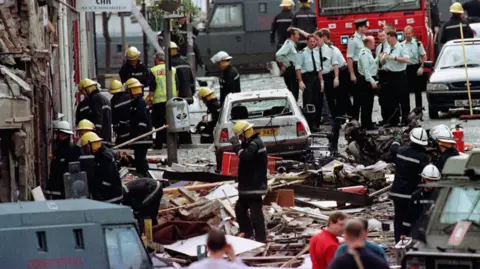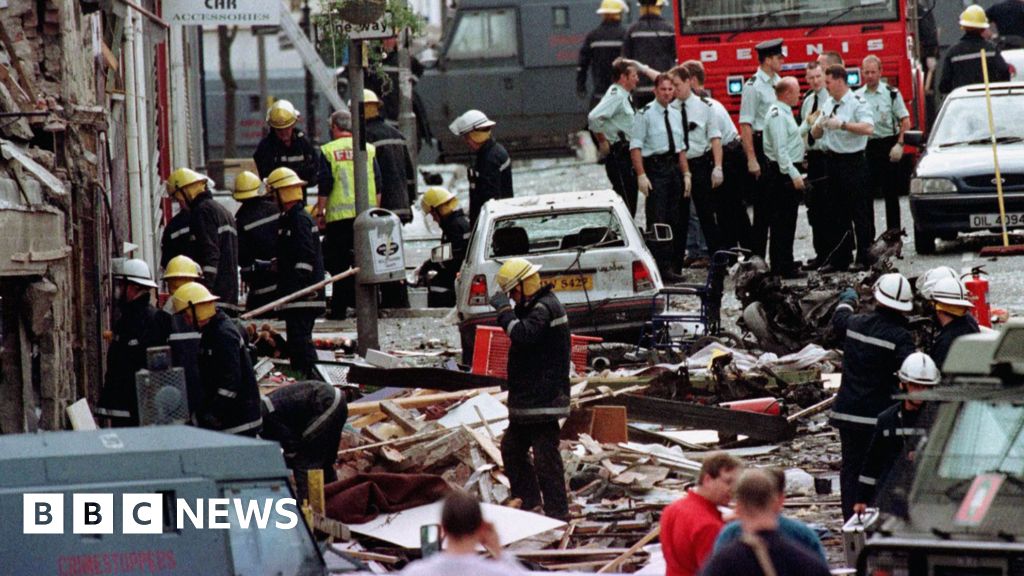BBC News NI crime and justice correspondent
 PA Media
PA MediaThe Irish government has agreed a co-operation arrangement with the Omagh Bombing Inquiry.
A Memorandum of Understanding (MoU), which had been expected, was signed off at a cabinet meeting in Dublin.
Twenty-nine people, including a woman expecting twins, died in the 1998 Real IRA attack, which was carried out from the Irish Republic.
The MoU will allow the inquiry access to material held by the Irish government.
The inquiry secretary Sam Hartley welcomed the agreement.
“This formal agreement marks a significant step forward in allowing the inquiry access to material, information and assistance from the government and agencies in Ireland,” he said.
“Agreements of this nature are not commonplace in inquiries.
“On behalf of the inquiry, I express my gratitude to the government of Ireland for its repeated commitment to assist the inquiry.”
Some victims’ relatives, however, had wanted Dublin to establish a parallel inquiry in its own jurisdiction.
They believe it is the only way to ensure full disclosure of information and compel witnesses based in Ireland to provide evidence.
What was the Omagh bomb?
The bomb that devastated Omagh town centre in August 1998 was the biggest single atrocity in the history of the Troubles in Northern Ireland.
It came less than three months after the people of Northern Ireland had voted yes to the Good Friday Agreement.
Who carried out the Omagh bombing?
Three days after the attack, the Real IRA released a statement claiming responsibility for the explosion.
It apologised to “civilian” victims and said its targets had been commercial.
Almost 27 years on, no-one has been convicted of carrying out the murders by a criminal court.
In 2009, a judge ruled that four men – Michael McKevitt, Liam Campbell, Colm Murphy and Seamus Daly were all liable for the Omagh bomb.
The four men were ordered to pay a total of £1.6m in damages to the relatives, but appeals against the ruling delayed the compensation process.
A fifth man, Seamus McKenna, was acquitted in the civil action and later died in a roofing accident in 2013.
The public inquiry
After years of campaigning by relatives, the public inquiry was established to examine if the Real IRA attack could have been prevented by UK authorities.
This phase of the inquiry was to hear powerful individual testimonies from relatives who lost loved ones in the explosion.
The bombers planned and launched the attack from the Republic of Ireland and the Irish government has promised to co-operate with the inquiry.
However, the victims’ relatives wanted the Irish government to order its own separate public inquiry.
Dublin previously indicated there was no new evidence to merit such a move.
On Wednesday Mr Greaney said members of the inquiry team had met officials from the Irish government on several occasions, most recently on 5 February.
He said it was their belief that the outstanding issues over disclosing information had narrowed.
He said they were waiting for a substantive response but it was understood a memorandum would be signed in March subject to the approval of the Irish government
The inquiry cannot compel anyone from outside the UK to give evidence.
